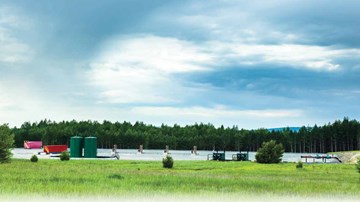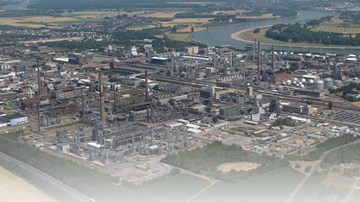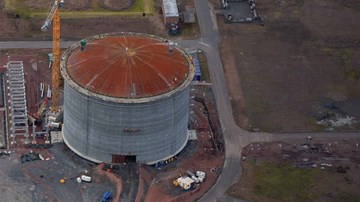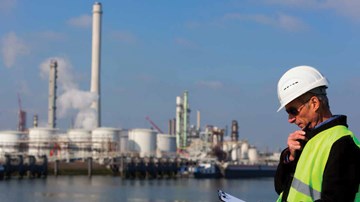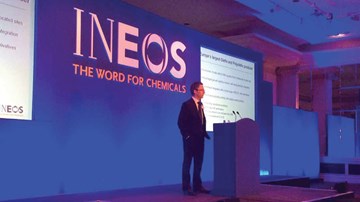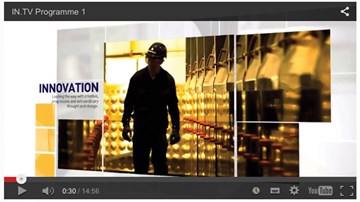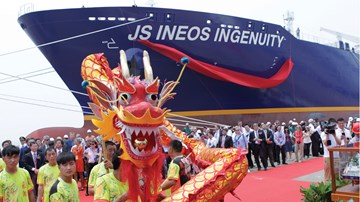Comfort zones are not for everyone. Especially men like Tony Moorcroft. To him, a change is always better than a rest, as INCH discovered
ON 19th March 2003 American President George Bush addressed the world.
In a live TV broadcast, he said that the Allied campaign to disarm Iraq, free its people and defend the world from grave danger, had begun.
Watching events unravel, perhaps more closely than others, was Army reservist Tony Moorcroft, thousands of miles away at his home in the UK.
For his specialist maritime regiment had already become the first to be compulsorily mobilised since the Second World War.
He had received a letter, sealed in a brown envelope, in the post two months earlier.
“At the time I had opened it and briefly read it before setting off for work, but I didn’t fully take in the content until a few hours later when I suddenly realised this was for real,” he said.
Understandably his family were more worried than he was.
“You know that it’s what you have been trained and signed up for so you become totally focused on the hour by hour, day to day tasks which enable you to overcome any fears or trepidation,” he said. “But they have to get on with a things in as normal a way as possible.”
A week after he had received his call-up papers in January 2003, he had left the family home in the north of England and joined his 165 Port and Maritime Regiment, a specialist, logistical unit, as part of Operation Telic 1.
Their job for the next five months would be to keep Allied Forces alive as they landed at critical locations in Iraq and Kuwait.
As a non-commissioned officer he also had the added responsibility of looking after a team of men.
“That really focuses the mind to achieve the outcome everybody wants which is to return safely to family and friends,” he said.
Although thousands died in the conflict, Tony lived – and returned to his job as HR director for INEOS ChlorVinyls and INEOS Enterprises.
“After a brief period of leave, I wanted to get back into civilian, normal life as quickly as possible,” he said. “For me it was fairly easy to adjust because as soon as I returned to work, I was back into a busy schedule. Family, friends and colleagues, though, gave me a great deal of support and didn’t pester me with endless questions, and the support I received from INEOS was fantastic. Many reservists were worried about their jobs back home. I wasn’t which meant I could focus solely on making sure everyone came home safely.”
It was an experience, though, that would change his life.
“I learned a lot about myself and others but it’s not one that I would repeat without trepidation,” he said. “I value life more and I think I now handle difficult situations better.”
“I initially joined to enhance my engineering skills and further my career,” he said. “But being a reservist has changed my life in more ways than one and INEOS as an employer could not have done any more. In the Army Reserve you learn to prepare for very demanding environments where you have no choice but to take responsibility and be accountable for your actions. We face similar challenges and dilemmas in the chemical industry. Over the years I have found that both roles complement each other with the need for leadership, team work, discipline, integrity and respect.”
He must also have been doing something right.
For last year he was nominated for a Queen’s Birthday Honour – the Queen’s Volunteer Reserve Medal – for exemplary meritorious service in the conduct of their duties by his commanding officer Lt Col CK Thomas RLC.
Only 13 are awarded each year.
“My initial reaction was shock,” said Tony, 55. “But it very quickly turned to pride because so few of these medals are presented each year which makes it very special.”
He was presented with the medal at Buckingham Palace by Prince Charles who recalled meeting Tony in 1993 at the Battle of the Atlantic commemorations ceremonies in Liverpool.
“He was particularly interested in my switch from the Navy to the Army because we had both served on the same class of ship during our careers,” he said.
Badge of honour
ACCOLADES don’t come much higher in Tony Moorcroft’s book than the Queen’s Volunteer Reserve Medal.
But then again, neither does the praise that earned him that prestigious award.
His commanding officer, Lt Col Colin Thomas, who nominated him for the award, said Tony continued to stand out as an exemplary and selfless individual even though he was now nearing retirement.
“He has always been known for his team spirit and readiness to sacrifice his own ease and comfort if it would help his colleagues,” he said. “All those who work with him, and perhaps most importantly those whom he commands, view him with the utmost respect. He is wholly committed, totally dependable and has unbridled enthusiasm, even after more than three decades of both naval and military service.”
Lt Col Thomas said Tony cared deeply for the welfare of his soldiers when they were deployed in Iraq in 2003.
“In addition to his main job, he put a huge amount of energy into turning his hand to repair or improvise basic facilities which ensured that morale remained high,” he said.




